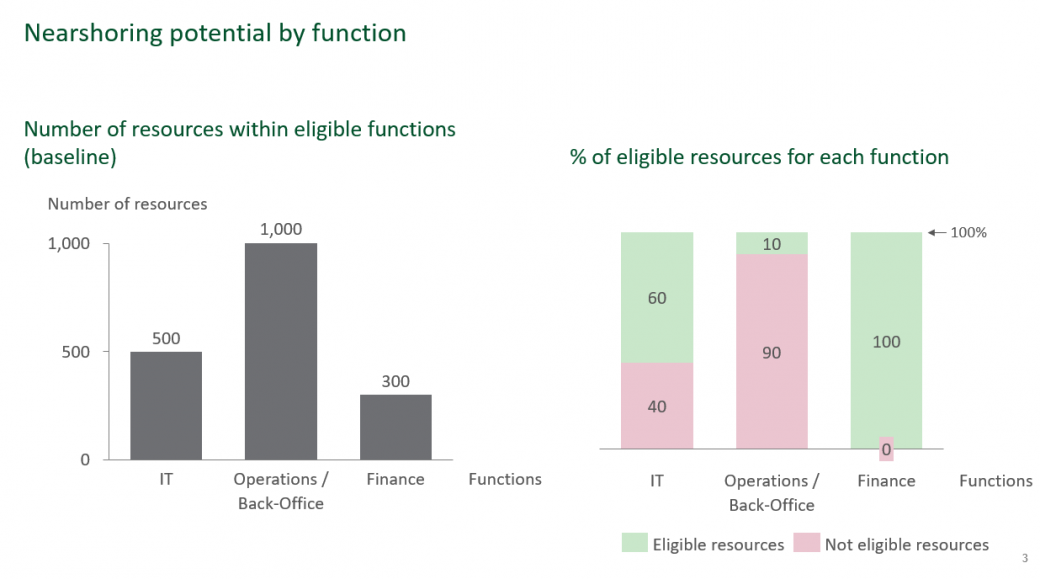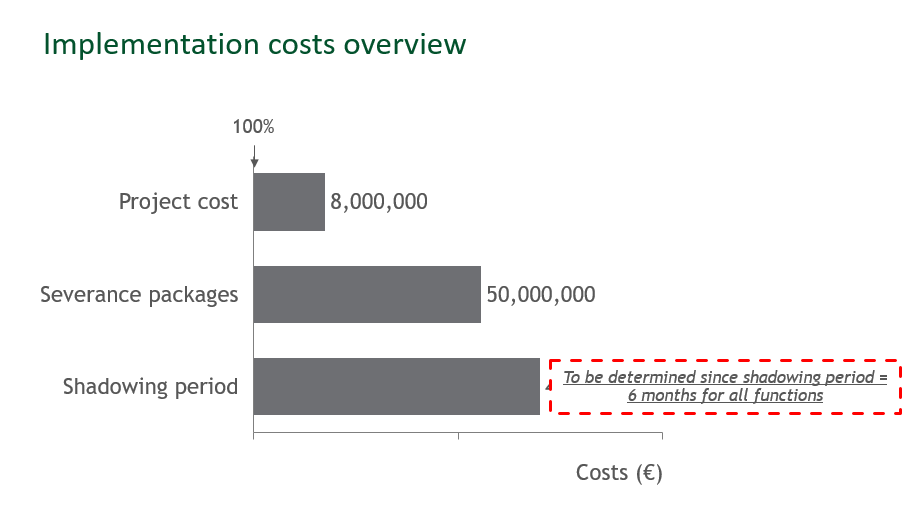a) What is the nearshoring potential in Warsaw?
- Warsaw is not relevant because it is the target nearshoring hub
- Nearshoring seems more difficult in Asia and Americas because of timezone and/or language constraints and thus higher operational risk and more difficulty to find relevant people in Poland (e.g. speaking Japanese)
- France seems to be the location with the highest potential, focus will be given on this country only
- Front Office is not eligible since Front Office representatives must have proximity with clients, out of eligibility scope
- Support functions seems to have higher potential; we can focus for example on IT, Operations (Back-Office) and Finance for instance.
- IT: 500 FTEs at stake // note : FTE means full time equivalent - number of full time resources in other words
- Operations / Back-Office : 1000 FTEs at stake
- Finance: 300 FTEs at stake
Out of all each eligible functions (total of eligible FTEs = 700 on the 3 perimeters), the volume of people eligible for nearshoring needs to be assessed.
- IT: 60% of FTEs are eligible for nearshoring (=300 FTEs)
- Operations / Back-Office: 10% of FTEs are eligible for nearshoring (=100 FTEs)
- Finance: 100% of FTEs are eligible for nearshoring (=300 FTEs)
b) What could be the savings on the scope with nearshoring potential?
- IT
- Averaged salary in Paris: 140k€
- Averaged salary in Warsaw: 50k€
- Back-Office / Operations
- Averaged salary in Paris: 120k€
- Averaged salary in Warsaw: 50k€
- Finance
- Averaged salary in Paris: 100k€
- Averaged salary in Warsaw: 70k€
Total salary savings is 43 millions €
- IT: 27 mn€
- Back-Office / operations: 7 mn€
- Finance: 9 mn€
On top of salaries, environment costs (participation in building costs, ...) must be compared (Paris vs. Warsaw).
- Averaged savings for each FTE is 10k€
- Savings due to different environment is 700 FTE x 10k€ = 7Mne
- Total savings is 43mn€ + 7mn€ = 50mn€



